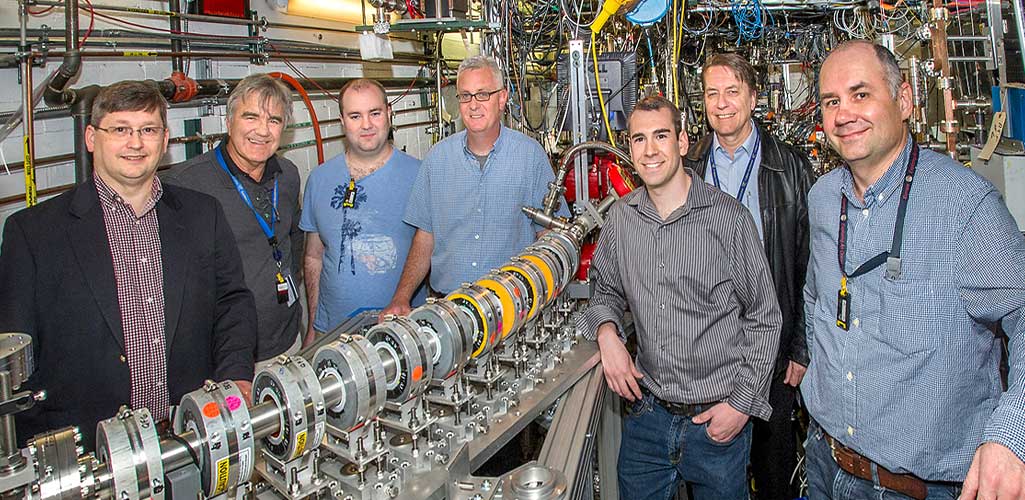Accelerator Test Facility
Studying properties of modern accelerators and new techniques of particle acceleration

The Accelerator Test Facility (ATF) is a U.S. Department of Energy Office of Science User Facility designated to support Accelerator Stewardship for the nation. The Accelerator Stewardship mission is to make particle accelerator technology available for science and industry and to support the development of accelerators that meet national needs. The ATF helps address that mission by providing a user facility where research teams can develop transformational capabilities to support the fields of energy and environment, medicine, industry, national security, and discovery science. We provide free access to academic and government users whose proposals successfully pass a merit-based program advisory committee review. Industrial users can conduct proprietary research via a full cost-recovery model.
To see how you can get involved with this facility, contact Mark Palmer at (631) 344-8841.
Basic Research
The ATF user program supports developments in fundamental accelerator and laser science that may yield next generation capabilities to address national needs. User-driven basic science research at ATF spans: the study of novel particle acceleration techniques that can lead to smaller and more cost-effective accelerators; the study of techniques to provide high-brightness radiation sources, ranging from terahertz radiation to x-ray sources; development of next-generation ion generation and acceleration techniques; the study of laser processes that may lead to more compact particle accelerators; and the study of ultrafast electron diffraction and microscopy techniques. Examples of the cutting-edge user research at ATF include: key demonstrations of free electron laser techniques, the study of Compton scattering as a high energy x-ray source, the demonstration of direct laser acceleration, and unique studies of laser-driven ion generation and acceleration.
Applied Research
The ATF provides a unique combination of high brightness electron beams and mid-infrared laser beams to enable tests of advanced accelerator and laser technologies. These beams can also be used to irradiate and characterize electronics and materials. The ATF has contributed to: the development of high brightness photocathode electron guns that are in regular use at accelerators around the world; tests of the high field magnetic undulator concepts that are central to the operation of facilities such as the Linac Coherent Light Source at SLAC National Accelerator Laboratory; and the recent testing of a permanent magnet lattice system that has the potential to make Energy Recovery Linac accelerator designs more cost effective (currently being deployed at the Cornell-Brookhaven Electron Test Accelerator).
Test Facilities and Expertise
The ATF is home to a high-powered, multi-terawatt and picosecond class carbon dioxide (CO2) laser and high-brightness electron beams, 20-80 million electron volt (MeV) energies with one-micron emittance. The laser and electron beams can be used independently or together to test out innovative schemes for accelerating particles and producing bright beams of light. The ATF team has extensive experience working with nearly 100 users a year to design, implement, and operate challenging accelerator experiments that explore the frontiers of accelerator science and technology. As part of its Accelerator Stewardship mission, the facility provides its accelerator and laser capabilities to support society’s scientific, industrial, and security needs.
Workforce Development
The Accelerator Test Facility ATF provides a fertile venue for developing the next generation of accelerator and technology leaders. Undergraduate, graduate, and post-doctoral researchers regularly participate in experiments being undertaken by our scientific collaborators and user community. ATF scientists and engineers regularly host summer interns who participate in the programs offered by Brookhaven’s Workforce Development and Science Education Office. The facility also hosts an annual hands-on graduate-level course in accelerator physics in collaboration with the Center for Accelerator Science and Education at nearby Stony Brook University.



